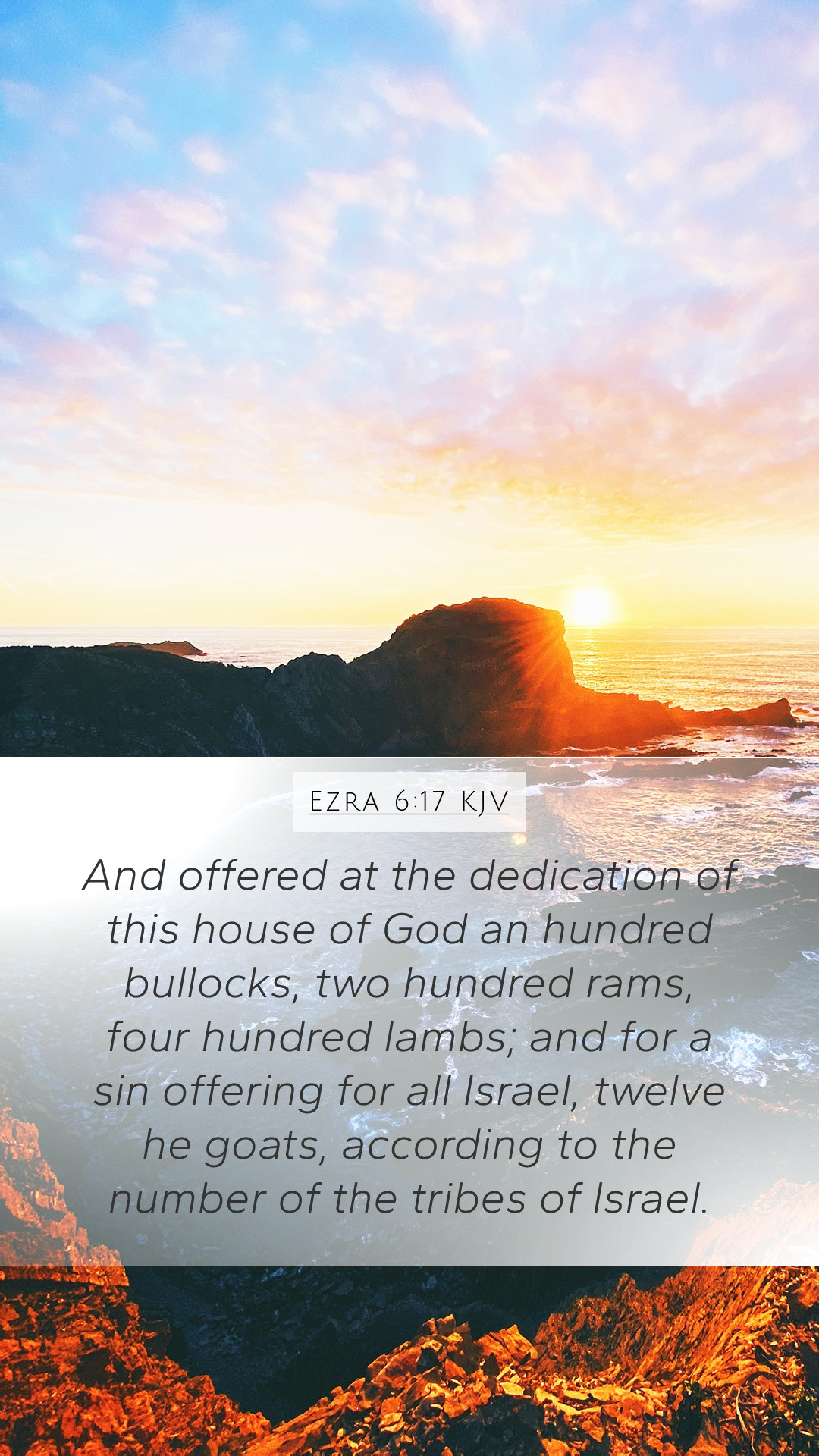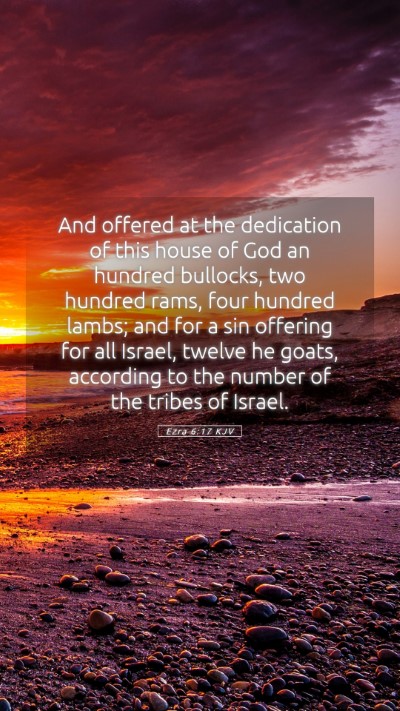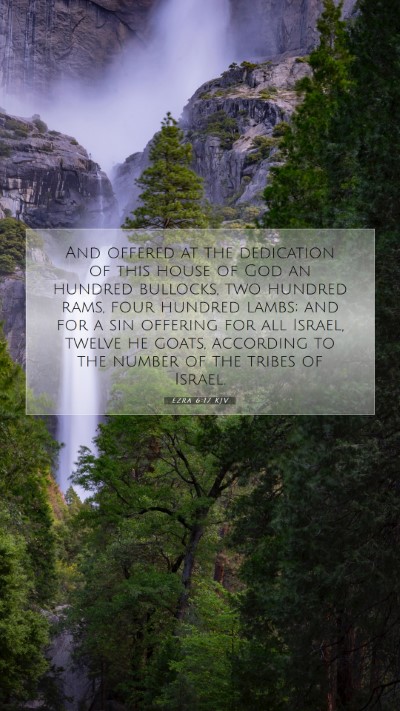Old Testament
Genesis Exodus Leviticus Numbers Deuteronomy Joshua Judges Ruth 1 Samuel 2 Samuel 1 Kings 2 Kings 1 Chronicles 2 Chronicles Ezra Nehemiah Esther Job Psalms Proverbs Ecclesiastes Song of Solomon Isaiah Jeremiah Lamentations Ezekiel Daniel Hosea Joel Amos Obadiah Jonah Micah Nahum Habakkuk Zephaniah Haggai Zechariah MalachiEzra 6:17 Meaning
What is the meaning of Ezra 6:17?
And offered at the dedication of this house of God an hundred bullocks, two hundred rams, four hundred lambs; and for a sin offering for all Israel, twelve he goats, according to the number of the tribes of Israel.
Ezra 6:17 Bible Verse Meaning
Understanding Ezra 6:17
Ezra 6:17 states:
"And they offered at the dedication of this house of God an hundred bullocks, two hundred rams, four hundred lambs; and for a sin offering for all Israel twelve he goats, according to the number of the tribes of Israel."
Bible Verse Meaning
This verse encapsulates the dedication of the second temple in Jerusalem after the Babylonian exile, highlighting the significance of this act in the life of the Israelite community. Several public domain commentaries provide insights to enrich our understanding.
Insights from Commentaries
-
Matthew Henry:
Henry emphasizes the ceremonial aspect of the temple's dedication, noting that the offerings were a reflection of gratitude and reverence towards God. He implies that the scale of the sacrifices symbolizes the community's acknowledgment of God’s mercy in restoring their worship.
-
Albert Barnes:
Barnes highlights the significance of each offering, suggesting that the diversity of sacrifices used during the dedication ceremonially represents the entirety of Israel. He offers insight into the ritualistic importance of such offerings and how they align the people with their covenant with God.
-
Adam Clarke:
Clarke provides a historical context, explaining that the offerings fulfilled the Mosaic Law regarding dedications. He notes that the twelve he goats may symbolize the twelve tribes of Israel, emphasizing unity and collective responsibility in seeking atonement.
Explanation of Key Elements
In analyzing the verse, it is critical to dissect its components:
- 100 Bullocks: Symbolizing strength and wealth, indicating the importance of the occasion.
- 200 Rams: Often associated with sacrifice and devotion.
- 400 Lambs: Representing innocence and purity, emphasizing the need for sin offerings.
- 12 He Goats: Each goat represents one of the twelve tribes, highlighting the communal aspect of repentance and dedication to God.
Historical Context
The context of Ezra 6:17 is essential for understanding its meaning. It takes place during the return of the exiles and the rebuilding of Jerusalem’s temple. This rebuilding was not only a physical construction but also a restoration of Israel’s worship and identity as God's chosen people.
Thematic Significance
This dedication ceremony signifies a new beginning for Israel, reinforced through abundant offerings—indicative of their newfound freedom and commitment to God. It underscores themes of repentance, celebration, and communal identity, reflecting their religious heritage and aspirations.
Application to Daily Life
When considering Ezra 6:17, modern readers might reflect on the importance of dedicating one's own life to God. The principle of giving thanks and acknowledging God’s blessings through offerings—whether material or through acts of service—remains relevant for contemporary believers.
Cross-References
- 2 Chronicles 7:5-6: Details the sacrifices during Solomon’s temple dedication, paralleling the importance of offerings at significant spiritual milestones.
- Nehemiah 12:43: References a similar dedication celebration, showcasing the communal joy in restoration.
- Leviticus 16:10: Talks about the scapegoat as a sin offering, providing insight into the significance of atonement in sacrifices.
Final Thoughts
In sum, Ezra 6:17 serves as a profound reminder of the importance of dedication and remembrance in one's spiritual life. It encourages believers to understand the significance of their offerings to God, whether symbolic actions or acts of service, rooted in gratitude and community engagement. This understanding enriches Scripture analysis and strengthens one’s relationship with God.


